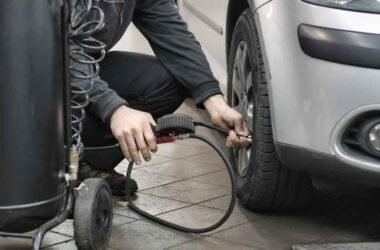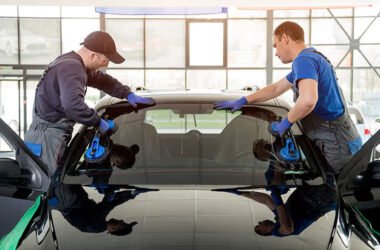If you’ve ever driven your pride and joy to the garage for its MOT and returned with a fail certificate in one hand and a sinking feeling in the other, you’ll know the pain. MOT checks are a legal must-have in the UK, designed to make sure your car is roadworthy, safe, and not a rolling fog machine. But the reality is, a surprising number of vehicles fail their first go. Let’s unpack the usual suspects – and perhaps save you from future garage-induced heartbreak.
Common Reasons for Car Failure
MOT failures aren’t just the result of ancient bangers clinging to life; plenty of seemingly fit and healthy cars trip up on simple things. The government’s MOT inspection checklist is thorough, and it doesn’t take much for a minor fault to tip you into the ‘fail’ column. Whether you drive a shiny new hatchback or a trusty old van, the rules apply equally – and sometimes the most basic things can catch you out.
If you’ve ever frantically Googled “Van MOT Near Me” on the morning of your test, take this as your sign to read on, prepare in advance, and maybe – just maybe – pass first time.
Faulty or Worn-Out Brakes
This one’s a biggie. Brakes aren’t just important for your MOT – they’re the difference between stopping safely at the lights and rolling gently (or not so gently) into the car in front. MOT testers check brake efficiency, wear on pads and discs, and whether your handbrake is more decorative than functional.
Common culprits? Worn brake pads, uneven braking caused by sticking calipers, or a handbrake cable that’s about as taut as last year’s Christmas party trousers. If your car squeals, shudders, or takes a football pitch to stop, get it checked before test day. If your car squeals, shudders, or takes a football pitch to stop, you might need to buy best brake pads for better stopping power and should get it checked before test day.
Excessive Exhaust Emissions
Nothing says MOT fail quite like your car puffing out more smoke than an old steam train. Excessive emissions are a common reason for failure – and not just for diesel drivers. Petrol engines can fall foul of the limits if the catalytic converter isn’t doing its job or if the engine’s running too rich.
Diesel drivers face the dreaded ‘smoke test’ – fail that, and you’ll be waving goodbye to your pass certificate. A clogged EGR valve, faulty sensors, or neglecting basic servicing can be the culprits. Sometimes, an Italian tune-up (a spirited motorway blast) can help clear things before the test – but it’s no replacement for proper maintenance.
Faulty Suspension Components
If your car clunks, bangs, or feels like a bouncy castle over speed bumps, your suspension might be in trouble. MOT testers will check springs, dampers, and linkages for wear, corrosion, or damage.
The UK’s pothole-laden roads are a suspension’s worst nightmare, and even the sturdiest shocks can give up after one too many encounters with a crater outside your local supermarket. Ignore suspension problems, and you risk uneven tyre wear, poor handling, and a guaranteed MOT fail.
Registration Plate Problems
It sounds daft, but an unreadable, broken, or incorrectly spaced registration plate is enough to land you with a fail. Plates must follow strict font, spacing, and reflective standards – no italicised letters, no cheeky slogans, and certainly no obscuring the numbers with dirt.
In winter, a quick wipe before your MOT could be the difference between a pass and a fail. And if your plate’s cracked or faded? Replace it – it’s cheaper than retesting.
Worn or Missing Wiper Blades
Your wipers might not be glamorous, but without them, you’ll fail faster than you can say “British drizzle.” MOT testers check that your wipers can clear the windscreen effectively, and that the washer jets work.
Split, worn, or missing blades are a surefire fail, as is a washer system that’s out of fluid or blocked. This is one of the easiest fixes – a fiver’s worth of rubber could save you the hassle of a retest.
Poor Vehicle Body Condition
The MOT doesn’t care about a bit of faded paint, but structural rust or sharp edges are another matter. If corrosion is found within certain distances from suspension mounting points, seatbelt anchors, or brake system components, you’re in fail territory.
Likewise, any jagged edges that could injure pedestrians or cyclists are a no-go. If your car’s bodywork is more hole than metal in places, the MOT will pick it up – and patching it with duct tape won’t cut it.
Final Words
The MOT isn’t designed to catch you out – it’s to ensure your vehicle’s safe for you, your passengers, and everyone else sharing the road. But with so many potential pitfalls, it pays to do a pre-test check. Look over your lights, tyres, wipers, and number plates; listen for strange noises; and deal with any dashboard warning lights before booking in.
If you drive a van, car, or anything in between, preparation is key. And if you’re already searching “Van MOT Near Me”, use that trip to the garage as a yearly reminder: a little TLC goes a long way in keeping you and your vehicle happily on the road – and out of the MOT fail pile.









